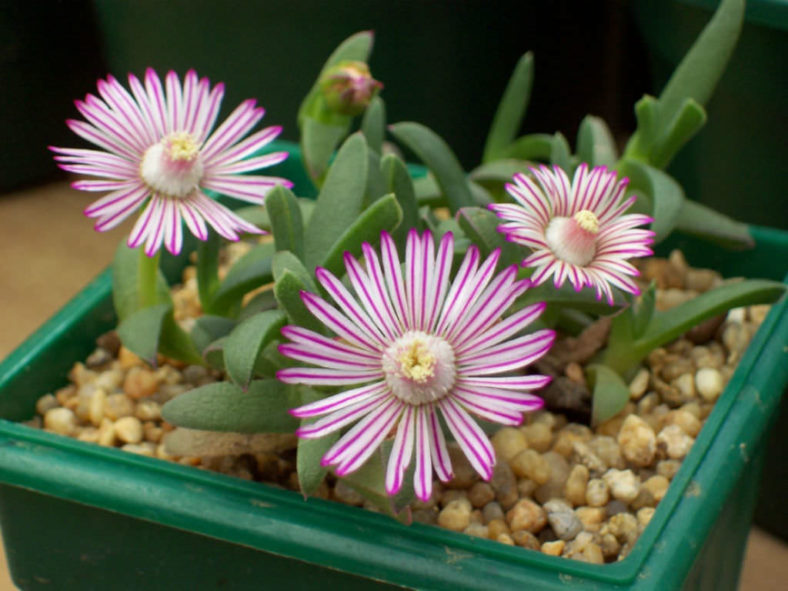Ruschia is a genus of over 400 species of succulent plants native to the drier parts of southern Africa. The generic name "Ruschia" honors Ernst Julius Rusch (1867-1957), a Namibian farmer.
Due to the large size of the genus, authors have grouped species into several sections, each based on growth habit, flower, and capsule form. Plants may vary from large erect shrubs reaching up to 5 feet (1.5 m) in height to dwarf, tufted, and even mat-forming ground cover species. All plants possess mostly woody roots situated very close to the soil surface. Branches are also woody and tough, with short internodes often covered with dry leaves. Some species possess spines as a form of protection against grazing animals. Flowers vary from white to pink and purple. They resemble the genus Lampranthus, but the latter have much bigger flowers and more color types. Members of Ruschia are all very floriferous. Flowers literally cover the entire plant. Flowering occurs throughout the year, reaching a peak in the fall and spring. Flowers are sweet-scented and diurnal (opening during the day). Leaves are often bluish-green, three-sided, and sometimes have teeth along the edges; they are nearly always stippled with darker, transparent dots, a distinctive feature in the genus.
Ruschias are tolerant of frost, fires, and extreme droughts, and this, together with their vibrant colors, makes them among the most popular water-wise garden plants known today.

Growing Conditions and General Care
Ruschias are popular for use in the garden. Their tolerance to drought makes them ideal water-wise plants in the arid and semi-arid parts of the world. Brilliant seasonal color displays can be achieved by mass planting in large areas and using different growth forms.
There are tufted, round-shaped plants that are well-suited for containers and flower boxes. The low-growing and spreading species cover well, do wonders for terraces and dams, and easily stabilize loose sand. Then there are the larger, more robust types, best suited for use among other larger plants or in combination with various succulents in rock gardens and mixed beds.
Remember that Ruschias are short-lived, and it is essential to continue replanting every three years. All species attract a host of insects, thus ideal subjects to attract wildlife to the garden throughout the year.
Once rooted or germinated, cuttings and seedlings can be fed with organic fertilizers to enhance vigor and health. There are not many serious pests that attack Ruschia. It is probably better to first use biological control when pests are detected.
Propagation
Ruschias are very easy to propagate by taking cuttings and replanting them. Place healthy cuttings in sand or cactus mix and water daily for best results. Keep cuttings in a sheltered but bright location and plant them out once they are well-rooted. This should be within a month at most.
Source: pza.sanbi.org
Links
- Back to genus Ruschia
- Succupedia: Browse succulents by Scientific Name, Common Name, Genus, Family, USDA Hardiness Zone, Origin, or cacti by Genus